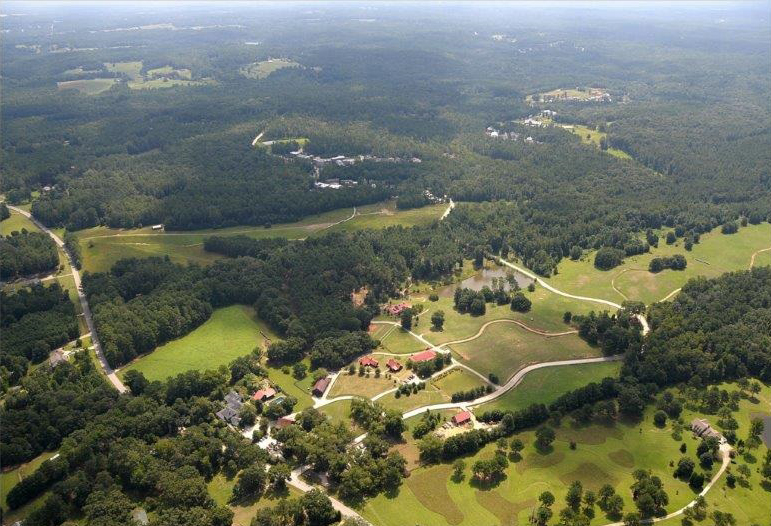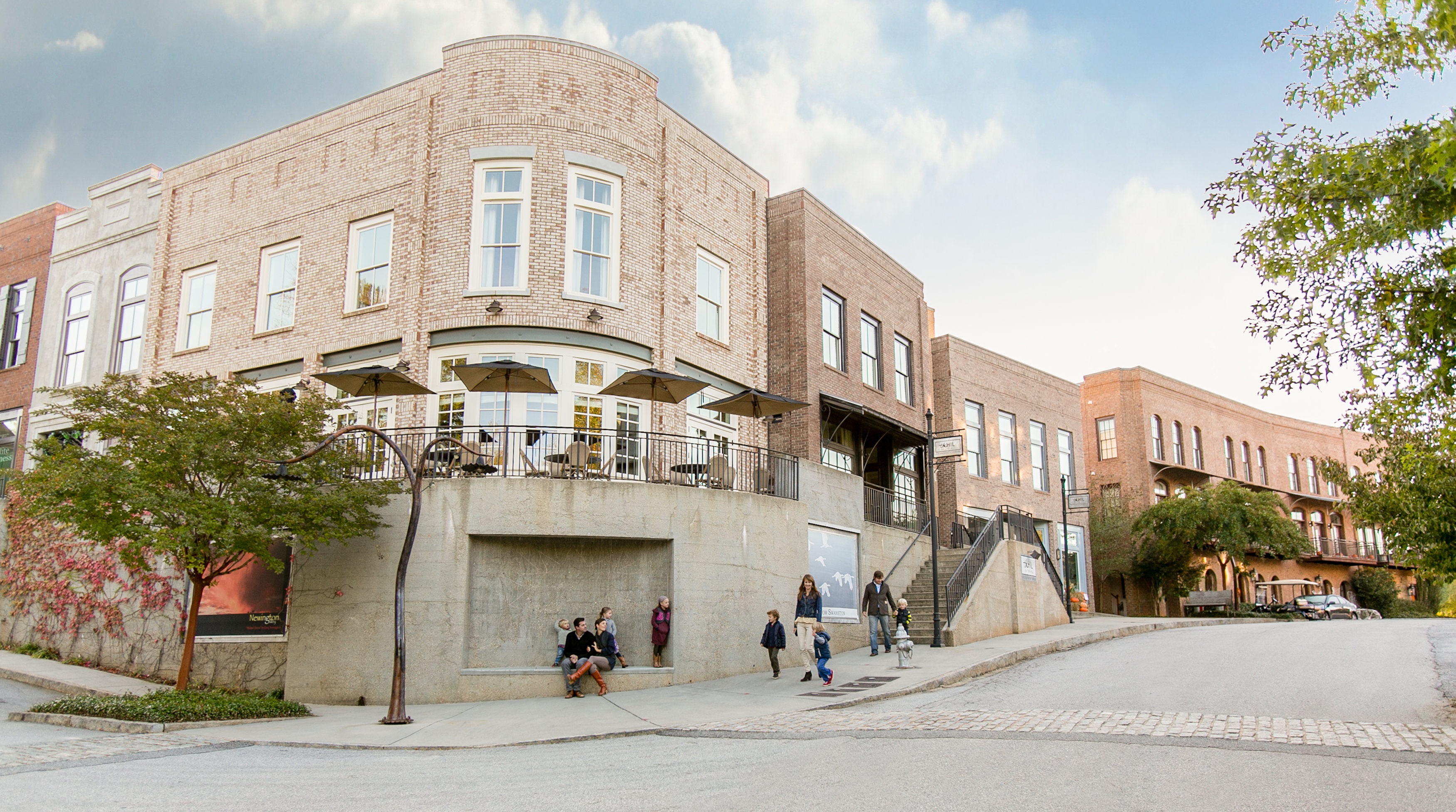Over the last six decades we have added so many regulations in an effort to organize the chaos of rapid sprawl. Today, these regulations and surrounding social perceptions that govern the development of our built environment sit in silos. This leads to a basic lack of understanding among governing sectors and the public about the interconnectivity of community living systems. The result is unintended consequences that affect our everyday lives.

Serenbe | Aerial
Regulation hurts communities
A prime example is the minimum grade requirement for streets is 12%. This one regulation leads to multiple hills being cut, disturbing more of the site than necessary, creating excessive erosion and polluting nearby steams.
On top of this unintended consequence, in order to receive a certificate of occupancy on the site, the disturbed area must have ground cover installed on the majority of the disturbed area and the only way to have instant ground cover is with sod. And for attractive sod we use excessive water, a precious commodity, and chemical fertilizers that lead to the disappearance of natural predators of nuisance insects. So we add more chemical sprays to our yard to rid ourselves of mosquitos and the like.
Soon, we are living in a highly chemical atmosphere. These consequences are because we regulated ourselves into a 12% street grade, in a silo.
How much of this disruption of the natural cycle can be attributed to increased asthma, cancer, allergies, etc. We are not sure why people are suffering from health problems at an increasing rate. What is so different about today from my grandparents’ generation? The two big things I see are:
- We poison our personal atmospheres (our yards and homes)
- We don’t eat as much fresh, local food (a subject for another blog)

Serenbe | Street Photo
Serenbe, and drawing inspiration from the past
My grandparents were farmers, as were many people 70 years ago. They understood in a very basic way the interconnectivity of living systems that we can call a biophilic way of living.
In our quest to develop a responsible community at Serenbe, I have identified 14 silos of public perception and policy. We had to change many laws and social perceptions or, at the time, just do things that seemed strange by today’s standards.
On a two-hour walk through the streets and paths of Serenbe, we can point out how we have integrated these regulatory silos. The best part is resident stories of personal, family and community health and vigor. We must get out of these silos to develop our built environment with nature. This is the biophilic approach to planning and building our communities.
One response to “The Biophilic Approach to Building Communities”
I live in Serenbe and Steve’s vision is not only being realized, the extra benefit of an interested and active community is a natural result. I wouldn’t live anywhere else.